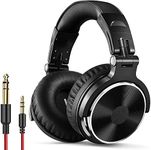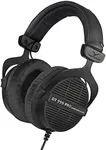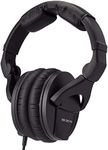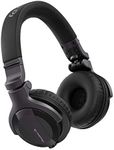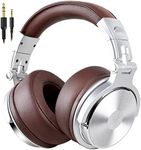Buying Guide for the Best Wired Headphones
Choosing the right wired headphones can significantly enhance your listening experience, whether you're using them for music, gaming, or professional work. The key is to understand the various specifications and how they align with your needs. Here are some important specs to consider when selecting wired headphones and how to navigate them.Sound QualitySound quality is crucial as it determines how well you can hear the details in your audio. This is often influenced by the frequency response, which indicates the range of sounds the headphones can produce. A wider frequency range (e.g., 20 Hz to 20 kHz) generally means better sound quality. If you enjoy bass-heavy music, look for headphones with a good low-frequency response. For classical or vocal music, a balanced frequency response is ideal.
Comfort and FitComfort is essential, especially if you plan to use the headphones for extended periods. This includes the design of the ear cups and the headband. Over-ear headphones are generally more comfortable for long use, while on-ear headphones are more portable. Look for adjustable headbands and cushioned ear cups. If you wear glasses, consider how the headphones fit over them.
ImpedanceImpedance is a measure of electrical resistance and affects how much power is needed to drive the headphones. Lower impedance headphones (below 50 ohms) are easier to drive and work well with portable devices like smartphones. Higher impedance headphones (above 50 ohms) often require a dedicated amplifier for optimal performance and are typically used in professional settings.
DurabilityDurability refers to how well the headphones can withstand wear and tear. This is important if you plan to use them frequently or take them on the go. Look for headphones made with high-quality materials like metal or reinforced plastic. Detachable cables can also add to the longevity, as they can be replaced if they get damaged.
Noise IsolationNoise isolation is the ability of the headphones to block out external sounds. This is achieved through the design of the ear cups and the materials used. Closed-back headphones offer better noise isolation, making them ideal for noisy environments. Open-back headphones provide a more natural sound but less isolation, suitable for quiet settings.
Cable Length and TypeThe length and type of the cable can affect your convenience and mobility. A longer cable (e.g., 3 meters) is useful for studio work or home use, while a shorter cable (e.g., 1.2 meters) is better for portable use. Some headphones come with detachable cables, which can be replaced or swapped for different lengths. Additionally, consider the type of plug (straight or angled) based on your usage.
SensitivitySensitivity measures how loud the headphones can get with a given power level. It is usually expressed in decibels (dB). Higher sensitivity (above 100 dB) means the headphones can produce louder sound with less power, which is good for portable devices. Lower sensitivity (below 100 dB) may require more power and is often found in professional-grade headphones.
